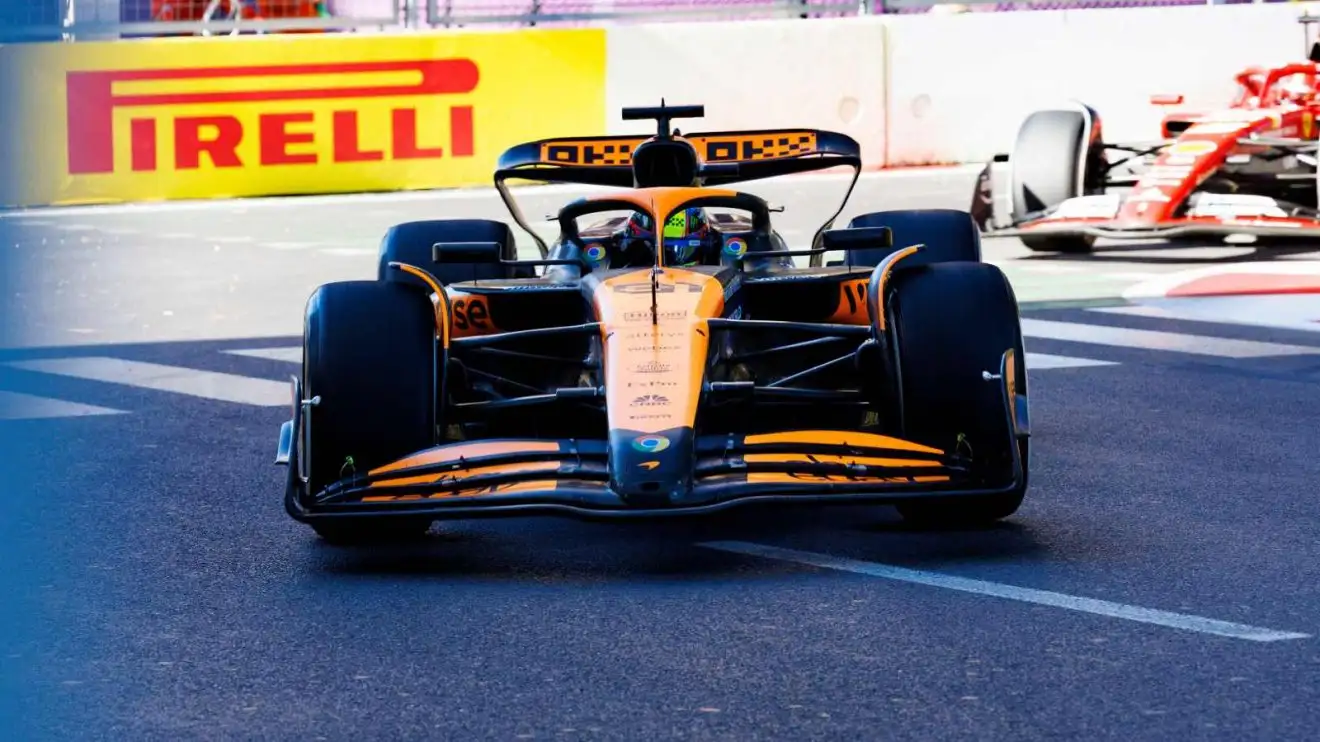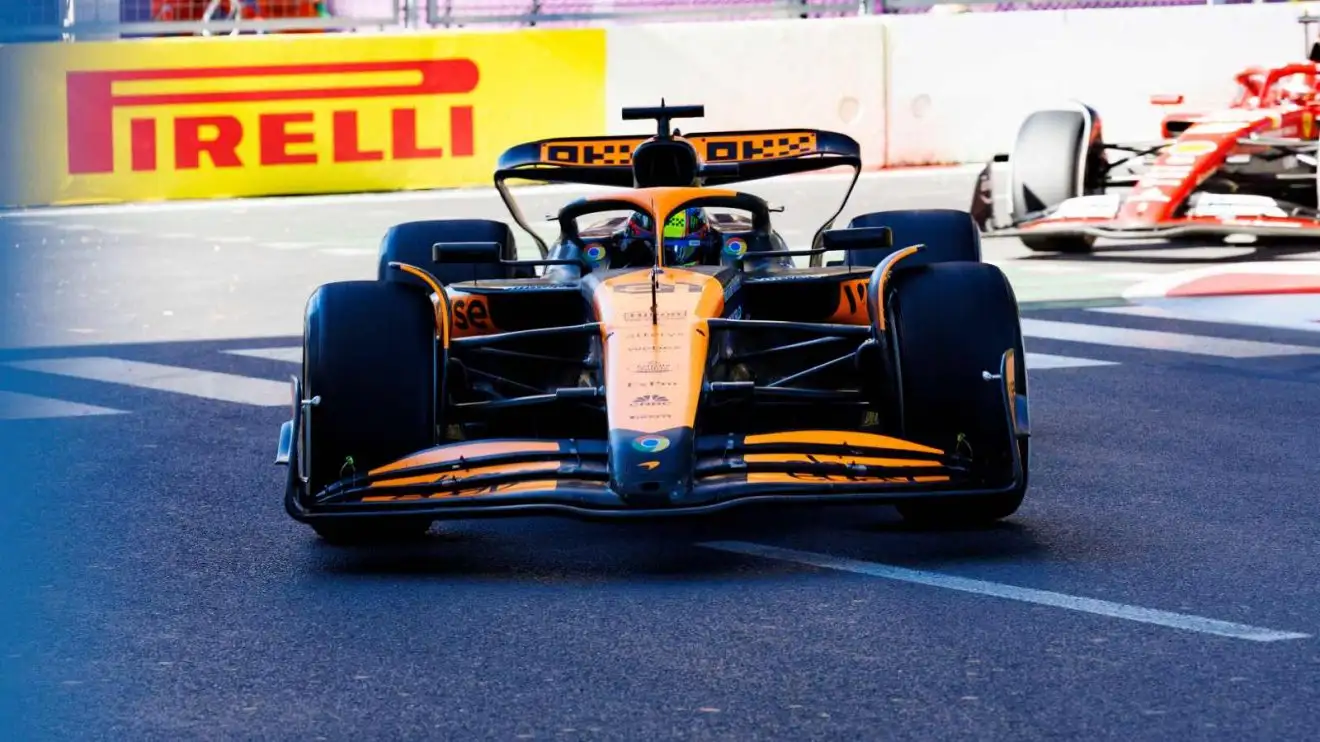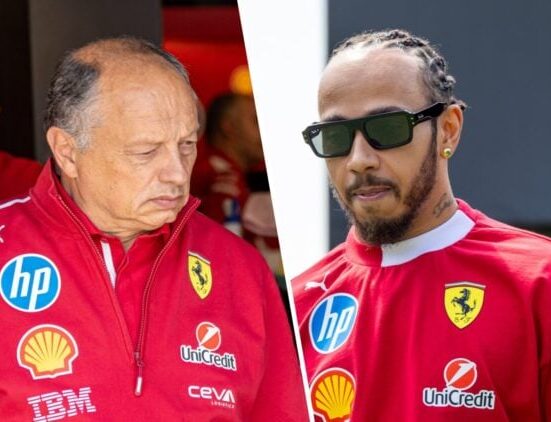McLaren’s ‘mini-DRS’ rear wing targeted in latest FIA technical rules sweep
13 Dec 2024 3:30 PM

Oscar Piastri took a superb victory for McLaren in the Azerbaijan Grand Prix
The FIA has tweaked the wording of the F1 2025 regulations, outlawing the circumstances that allowed for McLaren’s controversial ‘mini-DRS’ rear wing.
The latest edition of the Technical Regulations for F1 2025 has been published by the FIA, revealing changes in the wording of the rules related to the rear wing and the DRS.
FIA outlines new rear wing and DRS rules
McLaren’s low-downforce rear wing drew scrutiny after the Azerbaijan Grand Prix after TV footage revealed the rear wing flexing on Oscar Piastri’s MCL38 while the Australian led the race ahead of Ferrari’s Charles Leclerc.
The flex suggested a ‘mini-DRS’ effect, with the gap between the slats of the rear wing appearing to open wider than the rules permitted – however, the rear wing passed all static load tests in scrutineering.
But, following protestations from Red Bull and Ferrari, the FIA moved to ensure McLaren made changes to the rear wing design going forward, with the Woking-based squad making “proactive” changes to all of its rear wing range for the rest of the season, while the FIA’s Nikolas Tombazis indicated McLaren may have faced tougher sanctions had they not made the alterations.
While flexibility tests won’t change for F1 2025, the FIA has outlined wording changes in the regulations aimed at closing any particular grey areas allowing for unforeseen flexing in rear wings.
Article 3.10.1.c of the latest published Technical Regulations for F1 2025 states that: “At all points along the span, the rear wing profiles must have a minimum gap of between 9.4mm and 13mm.
“This will apply when the DRS is not in the state of deployment and will be measured with a spherical gauge.”
The rules pertaining to the DRS have also been tightened up under Article 3.10.10, with an exact definition of deployment offered as meaning DRS usage starts when “the adjustment of the DRS bodywork away from its original geometry has been commanded by direct driver input and controlled using the control electronics, and ending when the DRS bodywork has been returned to that same original geometry, having been disabled by the control electronics.”
Furthermore, while deployed, “At all points along the span, the two sections of the rear wing profiles must have a minimum gap of between 9.4mm and 85mm. This will be measured with a spherical gauge.”
Separately, the FIA has also clarified regulations pertaining to ‘Heat Hazard’. Under these regulations, Article 4.7 of the Technical Regulations, if race temperatures are forecast to exceed 30.5 degrees celsius, drivers must be given a cooling device in the cockpit. To compensate, the minimum weight limit will rise by 5kg in these circumstances.
More on the FIA and Formula 1’s governance
👉 FIA explained: What does it stand for and how does it govern F1?
👉 Explained: What is ‘parc fermé’ and how does the FIA enforce it?
2026 F1 regulations updated
The final meeting of the World Motor Sport Council in 2026 also signed off on further revisions to the F1 2026 aerodynamic regulations, pertaining to the active aerodynamics which will be introduced on the new chassis.
The fears have been that the 2026 cars will see a marked drop in performance compared to the current regulations, with the changes to the aero rules being made in order to compensate.
To that end, the proposed movable aero on the front wings will utilise two rotating flaps on the front wing to switch between low and high drag modes. Stops on the front wings will be in place to prevent flaps from over-rotating.
Renders released by the FIA for the F1 2026 concepts also show winglets on the front wing endplates, with the rear wings being permitted elements – the bottom main plane must remain fixed, with the new elements allowed to rotate based on low and high drag mode.
Read Next: Cadillac F1 document reveals next step taken to reach F1 2026 grid










Leave feedback about this